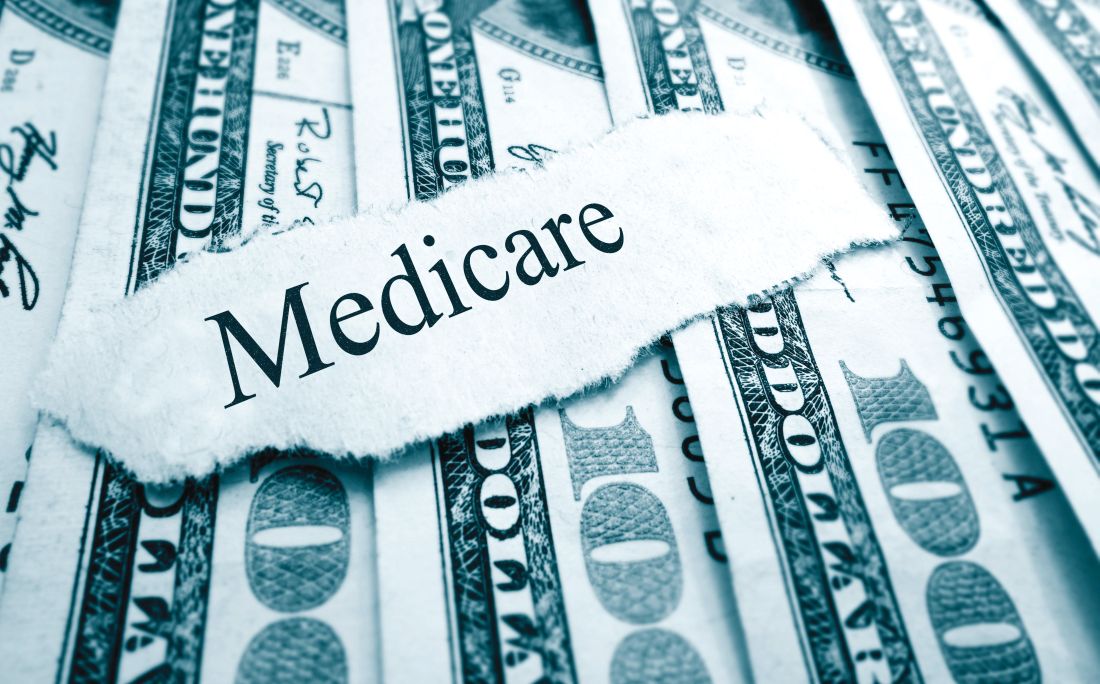User login
Some physician groups are pushing back on a proposal to lower the add-on percentage for reimbursement of new Part B drugs paid using the wholesale acquisition cost (WAC) when an average sales price (ASP) has not yet been established.
Under current regulation, physicians are reimbursed at WAC plus 6% for newly approved drugs. The Centers for Medicare & Medicaid Services is looking to reduce the add-on to 3% in the proposed update to the physician fee schedule for 2019.
In Sept. 6 comments to the agency, the American College of Rheumatology took on a neutral stance to the proposal as a whole, stating only that it appreciates “that the proposed rule does clarify that the change in reimbursement would not apply to new biosimilars, whose reimbursement would remain at the drug’s WAC plus 6% of the reference drug’s ASP.”
The American Society of Clinical Oncology took a more hard-line stance.
“CMS should not finalize the proposed reduction in the add-on rate for Part B drugs subject to payment through the wholesale acquisition cost methodology and should instead focus on pursuing comprehensive solutions that drive value-based cancer care,” ASCO said in Sept. 10 comments to the agency. It acknowledged CMS’ pursuit to lower drug spending, but suggested this will not have any meaningful impact “since most drugs are paid through a WAC-based methodology on a temporary basis only.”
The American Medical Association argued in Sept. 10 comments to the agency that, when accounting for the budget sequester that is in effect, physicians would only be getting reimbursed with a 1.4% add-on and that enactment of this proposal “would trigger reimbursement cuts for new drugs that will preclude their use in most physician offices and hinder Medicare patients’ access to new and innovated therapies that are more effective and/or less debilitating than existing drugs. AMA strongly believes that this proposal should not be finalized.”
Some physician groups are pushing back on a proposal to lower the add-on percentage for reimbursement of new Part B drugs paid using the wholesale acquisition cost (WAC) when an average sales price (ASP) has not yet been established.
Under current regulation, physicians are reimbursed at WAC plus 6% for newly approved drugs. The Centers for Medicare & Medicaid Services is looking to reduce the add-on to 3% in the proposed update to the physician fee schedule for 2019.
In Sept. 6 comments to the agency, the American College of Rheumatology took on a neutral stance to the proposal as a whole, stating only that it appreciates “that the proposed rule does clarify that the change in reimbursement would not apply to new biosimilars, whose reimbursement would remain at the drug’s WAC plus 6% of the reference drug’s ASP.”
The American Society of Clinical Oncology took a more hard-line stance.
“CMS should not finalize the proposed reduction in the add-on rate for Part B drugs subject to payment through the wholesale acquisition cost methodology and should instead focus on pursuing comprehensive solutions that drive value-based cancer care,” ASCO said in Sept. 10 comments to the agency. It acknowledged CMS’ pursuit to lower drug spending, but suggested this will not have any meaningful impact “since most drugs are paid through a WAC-based methodology on a temporary basis only.”
The American Medical Association argued in Sept. 10 comments to the agency that, when accounting for the budget sequester that is in effect, physicians would only be getting reimbursed with a 1.4% add-on and that enactment of this proposal “would trigger reimbursement cuts for new drugs that will preclude their use in most physician offices and hinder Medicare patients’ access to new and innovated therapies that are more effective and/or less debilitating than existing drugs. AMA strongly believes that this proposal should not be finalized.”
Some physician groups are pushing back on a proposal to lower the add-on percentage for reimbursement of new Part B drugs paid using the wholesale acquisition cost (WAC) when an average sales price (ASP) has not yet been established.
Under current regulation, physicians are reimbursed at WAC plus 6% for newly approved drugs. The Centers for Medicare & Medicaid Services is looking to reduce the add-on to 3% in the proposed update to the physician fee schedule for 2019.
In Sept. 6 comments to the agency, the American College of Rheumatology took on a neutral stance to the proposal as a whole, stating only that it appreciates “that the proposed rule does clarify that the change in reimbursement would not apply to new biosimilars, whose reimbursement would remain at the drug’s WAC plus 6% of the reference drug’s ASP.”
The American Society of Clinical Oncology took a more hard-line stance.
“CMS should not finalize the proposed reduction in the add-on rate for Part B drugs subject to payment through the wholesale acquisition cost methodology and should instead focus on pursuing comprehensive solutions that drive value-based cancer care,” ASCO said in Sept. 10 comments to the agency. It acknowledged CMS’ pursuit to lower drug spending, but suggested this will not have any meaningful impact “since most drugs are paid through a WAC-based methodology on a temporary basis only.”
The American Medical Association argued in Sept. 10 comments to the agency that, when accounting for the budget sequester that is in effect, physicians would only be getting reimbursed with a 1.4% add-on and that enactment of this proposal “would trigger reimbursement cuts for new drugs that will preclude their use in most physician offices and hinder Medicare patients’ access to new and innovated therapies that are more effective and/or less debilitating than existing drugs. AMA strongly believes that this proposal should not be finalized.”

